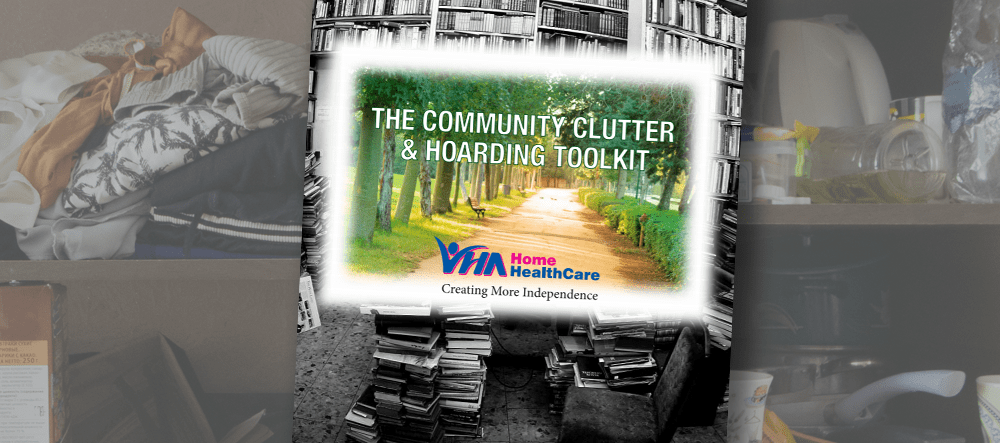More Innovation Helps People Dig Out of Clutter

We’ve all seen the images. Piles of boxes, books, clothing and empty food containers nearly consuming a home—burying treasures, memories and sometimes even the hopes and dreams of an individual whose clutter and hoarding have spun out of control. And while these circumstances make for compelling television, the reality of a life confined by clutter is a challenging one that faces an estimated five percent of the population.
Though severe clutter and hoarding affects those living amidst the chaos, it can also make delivery of home and community support services difficult if not impossible. It was an issue staff and service providers at VHA kept running up against in the field. The problem was there were no real resources available for community professionals who encounter hoarding on the job. That’s when two Occupational Therapists at VHA—Catherine Chater and Emily Levitt—not only took up the cause, but decided to take it to the next level by creating The Community Clutter and Hoarding Toolkit. The toolkit took several years to develop and is the first resource of its kind to support all sectors working in the community–whether they’re health care professionals, community workers, landlords/building managers or family and friends of the person with the hoarding problem. The toolkit launched in late February and has grabbed the attention of health and community workers from as far away as Australia.
“Time and again, we were approached by partners and colleagues for advice,” says Barbara Cawley, VP of Client Services at VHA. “This toolkit came out of a genuine need. Whether it’s a visiting nurse, a superintendent or a family member who discovers an incredibly cluttered home—we all can play a role in supporting someone who hoards to live a less cluttered and safer life.
”Unlike the spate of quick-fix reality shows that deal with the problem of hoarding in a very short time, the toolkit takes a more gradual and holistic approach to clutter. “It may seem like doing a clean sweep of the home is an easy way to stop hoarding,” notes toolkit co-author Catherine Chater, “but this is rarely a long-term solution for someone who hoards.” She adds that resolving the issue means understanding what caused the clutter in the first place and believes a gentler, less invasive approach—that uses Cognitive Behaviour Therapy and other practical strategies—is the most effective way to deal with the issue and prevent relapse. “When people who hoard are forced to get rid of the things they ‘collect,’ it can cause a lot of anxiety and stress. To them, the object often symbolizes something much bigger—it can define who they are or remind them of a memory they’re afraid they’ll forget otherwise. Our focus is on helping people who hoard to understand why they do it, how they can make different choices and take care of themselves.”
“We’re thrilled to be taking the lead on discovering new solutions to hoarding challenges,” says Cheryl Perera, Director of New Ventures and Community Programs, who also chairs the Toronto Hoarding Coalition. Established in 2007, the coalition advocates for Torontonians who want to access much-needed services to help them maintain housing stability and optimize their own health and safety, as well as the community’s. “It’s a complex issue that really is best solved through co-operation of workers in the community, friends and family and, of course, the individual who hoards.” To further support effective use of the toolkit and bring more community partners on board, VHA will soon launch workshops to deal with the issue in greater depth.
“These are people’s fathers, sisters, neighbours and friends. And when the clutter gets so out of hand, it can be a real safety hazard for falls, fire, and infestation,” says Perera. “And that can really impact the community as a whole. We hope that by sharing VHA’s expertise and knowledge, we can really raise awareness about the issue and together help those who hoard reclaim their living spaces and lives.”
For more on The Community Hoarding and Clutter Toolkit, please visit www.vha.ca.
For workshop information, please contact: Cheryl Perera, Director, New Ventures and Community Programs: 416-482-4610 or cperera@vha.ca
